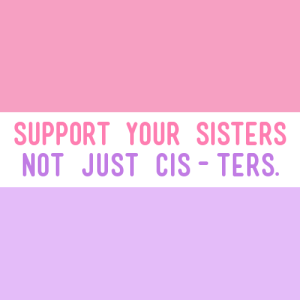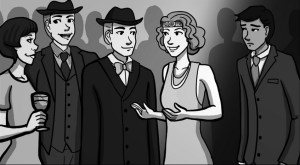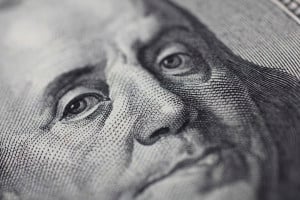
Hands folded over a wooden surface, as if the person is praying.
The amazing new Vision for Black Lives Platform that the Movement for Black Lives (M4BL) released in July covers over 39 policy recommendations and is a testament to the knowledge, expertise, and capacity of Black organizing to lay out an inspiring and complex vision of what justice looks like.
The platform was drafted by over fifty organizations and endorsed by over 300 groups. Not surprisingly, there is backlash to some of the content.
But it isn’t the framework on reparations in the platform that’s leading some liberal and mainstream Jewish organizations to critique the platform. It’s the inclusion of a critique of Israeli military policy, using the word genocide to describe the occupation and a discussion of the strengthening and building of black-Palestinian solidarity.
The M4BL position has been explained by a range of groups involved in drafting the platform, like the Dream Defenders, as well as Jewish groups and organizations that have been actively engaging in supporting the Movement for Black Lives, including T’ruah and JFREJ. It has also been denounced by mainstream Jewish organizations like the Anti-Defamation League, the Jewish Community Relations Council of Boston and others.
As White American Jews, we are at a crossroads in terms of which way we will go during a time of a tremendous racial justice leadership. It reminds me of a song I was raised on as a child of the American Jewish left, “Which Side Are you On?”
Our communities face a similar choice right now: Which side are we on in the struggles for Black and Palestinian liberation?
Below are a few suggestions for white Jews about how we can follow the key leadership of the Movement for Black Lives in this moment:
1. Realize It’s Not About Us – And Our Liberation Is Connected
In 2000, I was working as a Community Organizer in Worcester, MA. I had been organizing for six years, mostly in communities of color. It was the beginning of the second intifada and though I was raised Jewish, it was mostly a cultural identity up until that point. But I was beginning to realize that I needed to work with my people – my community – and I didn’t know who that was.
The Movement for Black Lives and Black Lives Matter isn’t about us as white people and white Jews specifically. It’s a movement that is building connections, campaigns, and strength in and between Black communities. It’s about the liberation of Black people and communities. But as a white person, I’m also impacted and thus the platform and the model of liberation has an impact on me.
In the M4BL platform, there are references to genocide in the Israeli treatment of Palestinian communities. Genocide as a word may have been created to speak about attacks on and murder of Jews in Europe, but we don’t own this word or the experience.
By simply acknowledging that genocides of Indigenous and Black communities have happened countless times across the world, we can actually strengthen solidarity. And the power of deciding what is named as genocide and what is not is huge, when there have been numerous mass killings that fit the definition of genocide.
For me, and for many other US Jews who were raised white, we often learned about Judaism through an Ashkenazi lens. Ashkenazi Jews settled for the longest period in Eastern Europe and Russia before being forced to migrate due to pogroms, the Nazi Holocaust, and other forms of ethnic cleansing.
One of the challenges of the way Jewishness is seen and felt in the US today is that it often equated with the Ashkenazi experience and history and erases the experience of Mizrahi, Sephardi, Middle Eastern, and Jews of Color.
This means that our traditions, politics, songs, prayers, practices, food, and even jokes are shared and learned through the lens of one Jewish experience based in Yiddishkayt, the history and experience of Ashkenazi Jews and of the Yiddish language.
So in a similar way to how the M4BL platform isn’t focused on us, Judaism is not just a province for white Jews. And at the same time, our humanity is also tied up in the full humanity of all Black people, Palestinians, and Jews being fully seen and to have access and agency in the world.
2. Listen to Jews of Color
It wasn’t until I went to Israel and Palestine in 2002 that I learned the diasporic history of not just the Ashkenazim, but of Sephardic and Mizrahi Jews and other Jews of color.
I had known individual Jews of color before that, but going to Israel, I began to see who was at the most dangerous checkpoints – who was living in settlements not because of religious beliefs, but because it was the only housing they could afford. It was most often Jews of color, just like communities of color in the US.
For so many years, Jewish communities have been seen as a monolith of mostly white, upper-to-middle class Jews. Thanks to the great work of JFREJ at the #Jews4BlackLives action (full disclosure: I was the director of JFREJ from 2003-2008), the Jews of Color Caucus of Jewish Voice for Peace and many amazing Jews of color leaders, this erasure of the complexity of Jewish communities is ending.
The role of Sephardic and Mizrahi Jews and other Jews of color plays a key role in shifting the role of Jewish communities from supporting people of color outside the Jewish community to one of…?
What this often means is that just as white supremacy has taught me and other white people that my ideas, views, and perspectives are correct and normative, it has also taught me that my experience as a Jew from an Ashkenazi background is what it means to be a Jew.
This erasure of the experiences of Jews of color continues to hurt all of us and limit the ways in which all Jews can bring our full selves to social justice movements. And in this moment, it has damaged the ways that Jews can be in alliance with Black communities, both in Jewish and non-Jewish communities.
Therefore, it’s even more important for us to listen to Jews of color – and Black Jews in particular – about their lived experience.
3. Recognize the Difference Between Lived Oppression and Learned Oppression
Back to me in Y2K, living in Boston.
My friend Jethro – tall, white, and Jewish – played on a Palestinian soccer team. He invited me to come to a rally with him on the Boston Common. I was always up for a rally, so sure! Off we went to the Jewish Community Relations Council Pro-Israel rally with our “Another Jew Against the Occupation” sign.
We were not a part of a very large contingent. I only remember the two of us. And a lot of really angry grandmas. They were yelling at us, spitting at us. They kept elbowing Jethro and stomping on his feet. I remember at one point we were standing in front of a few police officers when this was happening.
One of us turned to them and said, “Are you going to do anything about these attacks on us?” Their response: “We don’t see anything.” The veil of privilege was pulled back for a minute, and I saw what it was like on the other side.
As white Jews, many of us have learned about the experience of oppression from the pogroms, Nazi Holocaust, and many other times in history when Jews have been systematically targeted and oppressed. But this is not happening to Jews now.
In the power imbalance in the Middle East, Israel has all the military weight, strength, and force – both of its own government and as a proxy for US military policy in the region. There are times when as white Jews, our fear of not belonging can outweigh our commitment to justice. Finding community in which to get support and remember the people we are in this with – family, friends, and comrades – can help us remember that the fear is not always real, but is learned and can be unlearned.
The lived experiences of non-Jewish and Jewish communities of color is real every day. Just in the past few months, we can look at the life and death of Koryn Gaines, Skye Mackabee, Joyce Quaweay, Alton Sterling, and Philando Castile. This isn’t the experience of white Jews or all the daily indignities that Black people and other communities of color face everyday.
How we learn to hold dear to an identity and build it, not based on our trauma and loss, but on our resilience and community, will be crucial as we move forward.
For me and Jethro that day, we had put ourselves up against the greater force that the police were there to protect.
4. Learn About the History of Systemic Racism in the US, Israel, Palestine, and Beyond
Part of why I went to Palestine and Israel back then was because I was tired of men screaming at me at rallies, “What about 1967? Have you been? Do you know what it’s like?”
The truth was I didn’t know. I hadn’t been. And I thought that if I went, I would get all the answers.
I quickly moved to a hostel and began working with a Palestinian NGO. The hostel was in East Jerusalem – historically Palestinian, but being taken over by Israelis through home demolition and eviction. We were right outside the walled old city, which was dotted with Palestinian carts and vendors.
One night, I was walking though the Old City with friends. It turned out it was Rosh Chodesh, the new moon. In the US, I had learned as I explored the Jewish world that this holiday is mostly for women to get together and talk about their periods. What I learned that night, though, was that it was the night when teenage boys from the Settlements came into the Old City, knocking over carts, assaulting vendors, drinking and smashing bottles.
I watched, terrified and pressed against the walls, as gangs of white teenage boys with peyas (side curls of the orthodox) wreaked havoc.
In that moment, I realized, I could stay in Israel and fight the occupation. But really, my heart told me that my work was at home, in the US, fighting racism here. So much of how white supremacy and racism plays out is invisibilized. But we can learn the facts:
- 173 of the 700 people killed by police thus far this year in the US were Black (current as of August 24, 2016).
- It would take a Black family 228 years to have the wealth of a white family in the US.
- 90% of the water in Gaza is undrinkable; that the development of Israeli settlements within the West Bank – and the ongoing destruction of villages, wells, olive orchards, and so on – is a daily occurrence. All of this is the everyday life for both Palestinians and Jews of color in Israel and mirrors the experience of Black communities and other communities of color in the US.
- Diaspora has forced Jews of color around the world to convert, flee their homes, or be killed from the Spanish Inquisition onward.
How to hold these facts and not be overwhelmed can be hard. It’s a lot of devastating information.
And since people of color are living with it every day, our duty is to at least be able to sit with these facts – and as groups in the US and Palestine are doing, to make the connections between the Black and Palestinian experience explicit.
5. Feel the Feels – And Go There Anyway
Take a minute and take a deep breath. Inhale for a count of four, hold for a count of four, exhale for a count of four. Repeat three times.
A lot of white Jews get scared when there’s any discussion of Israel, Palestine, and the impact of Israeli military policy. There’s a reason we get scared: We’ve been taught this fear over time. We’ve been taught that by holding on so tightly to our fear, we will keep harm, devastation, and attacks from happening again.
But our fear will not keep us safe, as Yotam Moram discussed recently. Long-time activists and scholars Aurora Levins Morales and Paul Kivel outline clearly the “buffer role” that some Jews have been taught – Jews as the visible face of power for the owning class. The problem is, this doesn’t work out well for the Jews (or really for anyone).
Operating from a place of fear and scarcity doesn’t help us as white Jews, and it doesn’t help any other communities with which we want to align ourselves.
Recognizing this distress can go a long way towards making different choices that can allow us to move not out of fear and scarcity, but from compassion and grounded perspective.
6. Call In Other White Jews to Talk About Genocide
Now is the moment for us to reach out – at daycare, at the coffee shop, over shabbas dinner to hear what the feelings and fears are from other Jews about other people claiming the word genocide, about others naming their oppression and putting out demands that can feel hard and scary and overwhelming, but also answer the true call for justice.
Now is a time not for defriending people on Facebook, but to dig into our differences with our kin. We don’t get to choose all of our kids, friends, parents, or neighbors.
So what does it mean to have awkward conversations about race in a time when the specter of Donald Trump looms? For many white Jews, especially secular folks, our Jewish home has been in social justice movements going back to the Bund (socialist labor movement) in the early 20th century. How can it be even more of a home for Palestinians as well?
What does it mean to dig into the meaning of genocide that requires we examine what is being done in our name?
7. Build Support in Our Communities for the Movement for Black Lives
Share the Vision Platform. Have a discussion group where you dig into the platform, maybe even for the High Holidays. There is a tremendous amount to learn, and it’s a true gift for all of us.
Want to support it more? Donate to the M4BL Joint Fund. Join a campaign that addresses one of the key planks of the platform.
White Jews can move forward towards our shared liberation by following the leadership of Black communities, of Jews of color, and listening and learning about our own stake in a world where our liberation is inextricably tied to that of others.
Over and over in the US, we are told that a segment of the Jewish population was in the streets as a part of the Black Civil Rights movement. We are in the midst of another Black Liberation movement. We can critique from the sidelines – or we can get in, grapple with it, and organize our people.
Which side are you on?
[do_widget id=’text-101′]
Dara Silverman is a long-time organizer, writer, and trainer who has been building movements for economic, racial, gender, and social justice for over twenty years. Dara was the Founding Director of Showing Up for Racial Justice (SURJ), a national network of white people taking action for racial justice. Dara is based in Hudson Valley, NY. Learn more about her work at her website here, follow her on Twitter @darasilvermanus, and book her for speaking engagements here.
Search our 3000+ articles!
Read our articles about:
Our online racial justice training
Used by hundreds of universities, non-profits, and businesses.
Click to learn more
Most Read Articles
- « Previous
- 1
- …
- 30
- 31
- 32



















